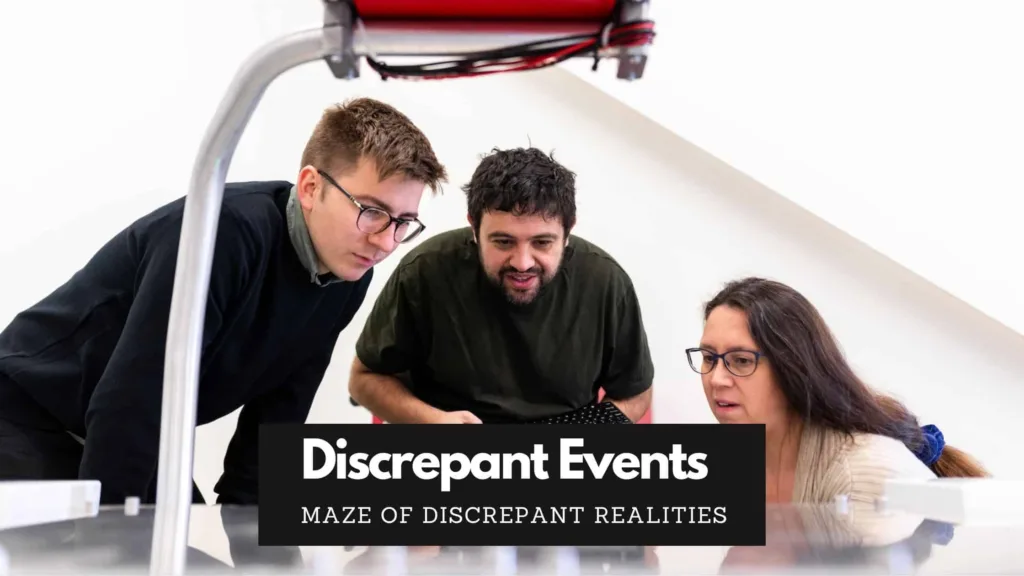Think of Discrepant Events as cool surprises in science class. They’re like little challenges meant to make you think hard, question what you thought you knew, and understand science better. Teachers use these surprises to make learning fun and help you figure out how things really work in the world of science. In this article, we’ll talk about why these surprises are awesome for learning, how they help us explore science, and some smart ways teachers use them in lessons.
The Purpose of Discrepant Events
Engagement and Curiosity: Imagine you’re doing a science experiment where everyone expects a ball to bounce really high. But, surprise! It doesn’t bounce at all. This unexpected result makes everyone go, “Wait, what just happened?” It’s like a magic trick, and that curiosity makes learning more exciting.
Example: You drop two balls, one heavy and one light, expecting the heavy one to bounce higher. But, to everyone’s surprise, both bounce the same. That’s a discrepant event!
Critical Thinking Skills: Think of a time when you thought mixing certain colors would make green, but instead, it turned brown. Discrepant events are like that. You have to think hard, figure out why it happened, and learn from it. This thinking process helps you become really good at solving problems.
Example: You mix red and blue paint, expecting purple, but it turns brown. Now you have to think about why this happened and understand more about colors.
Conceptual Understanding: Picture a science experiment where everyone believes an ice cube will melt super slowly in a warm room. But, surprise again! It melts really fast. This makes everyone rethink how they understood heat and ice melting.
Example: You put an ice cube in a warm room, expecting it to melt slowly. But, surprisingly, it melts quickly. Now you have to fix your idea about how heat affects ice melting and understand it better.

How to Incorporating Discrepant Events
- Pick a Fun Surprise: Choose an experiment that has a cool surprise at the end. It could be about everyday stuff or something you learn in science, but it has to be a bit surprising!
- Get Everyone Excited: Before showing the surprise, ask your classmates what they think will happen. This makes everyone curious and excited about what’s going to happen.
- Do the Experiment: Now, do the experiment and show everyone the surprising part. It could be something you see or touch, or even a video. Make sure everyone gets to see it well!
- Talk About It: After the surprise, talk with your friends about what you saw. Ask questions and share your thoughts on why it happened. This helps everyone think more about what they just experienced.
- Connect to What You’re Learning: Link the surprise to what you’re studying in class. See how it fits with what you already know or if it changes your ideas. This connects the surprise to your lessons.
- Think About What You Learned: Take a moment to think about what you learned from the surprise. How did it change what you thought? What do you understand better now? This makes the learning stick in your mind.
- Do It Again or Try Something New: If you liked the surprise, maybe try it again with some changes. See if you get the same surprise or something different. It’s like being a scientist and experimenting!
- Use It in Your Lessons: Teachers can plan surprises like these into lessons. They can help start new topics, teach important ideas, or just make learning more fun. It’s a cool way to learn!
- Keep Exploring: Don’t stop with just what you learn in class. Try more experiments on your own or with friends. Stay curious and keep exploring interesting things.
- Remember It’s Okay to Make Mistakes: Everyone makes mistakes and gets surprised while learning. That’s part of the fun! Don’t worry if you didn’t guess the surprise right. Learning is an adventure, and it’s all about trying and discovering new things.
Related article: Moral Disengagement: Untangling Right and Wrong
Teachers can make learning fun by doing surprise experiments. These surprises help us be curious, think a lot, and understand science better. When teachers use these surprises in lessons, it makes learning more enjoyable and helps us explore and find out new things in science. It’s like going on a fun adventure that teaches us things we’ll remember!

Pingback: Paracosms: Parallel Realities, Infinite Possibilities